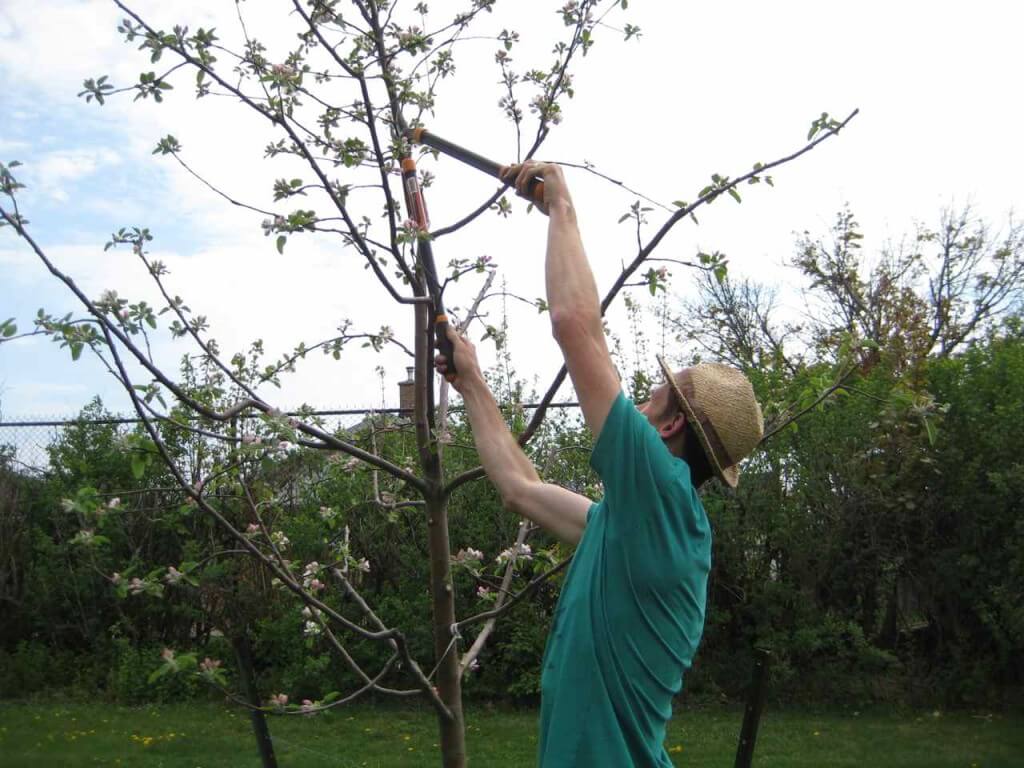Summer pruning has become an increasingly important practice for fruit trees, especially those with vigorous growth. This technique helps slow down growth, promotes the formation of new fruiting branches, and, for apples, ensures better ripening of existing fruits. By removing unnecessary growth, the remaining branches receive more sunlight, which is crucial for fruit development.
When maintaining fruit trees, gardeners typically distinguish between summer and winter pruning. Winter pruning, done after the leaves fall during the tree’s dormant phase, stimulates growth. On the other hand, summer pruning slows down the growth and encourages a bountiful bloom and fruit set. Moreover, trees in the sap-flow phase heal wounds quickly, preventing fungal infections, bacteria, and viruses from entering.
How to Summer Prune Sweet Cherries 🍒
Sweet cherries should only be pruned in summer, after the training phase has been completed. For mature trees, this maintenance pruning can take place either immediately after harvest or in late summer. Remove any steep, competing branches from the central leader (the trunk extension), as well as any inward-growing branches. Overhanging branches on older sweet cherries indicate that it’s time for rejuvenation pruning. It’s essential to keep the diameter of the branches to a maximum of five centimeters to avoid excessive gum flow, which can occur if thicker branches are removed.
How to Summer Prune Sour Cherries 🍒
Sour cherries, such as the popular but highly susceptible ‘Schattenmorelle,’ bloom on one-year-old long shoots. Over time, these shoots can become bare and droop downward. These old branches should be entirely removed at their base, while side shoots can be cut back to a well-developed bud or shortened to a younger, one-year-old branch. Some sour cherry varieties, like ‘Morina,’ also bear fruit on older wood and are less prone to the Monilia disease. Prune these varieties in a similar way to plums.
Summer Pruning for Apples and Pears 🍏🍐
Apple and pear trees can tolerate a strong pruning. Short shoots on the upper side of branches should be cut back as early as June. Cut back the 10 to 40 cm long shoots, which will become fruit-bearing branches, just above the rosette-like leaves at their base. Longer, non-woody young shoots should be torn off with a firm pull during the June snap (June tear). The main summer pruning for apple trees takes place in August when the terminal buds on the tips of the shoots are fully developed.
Important tip: For late-ripening apple varieties, avoid shortening the fruiting branches. If too much leaf mass is removed, the fruits may not be adequately nourished, which can slow their ripening process.
Pruning Plums 🍑
Plum trees require regular but restrained pruning. Cut older fruit branches (over three years old) above a two-year-old shoot and remove crowded, upward-growing, or inward-reaching shoots at the base to open up the canopy. This process helps maintain a healthy tree structure.
By following these guidelines for summer pruning, you’ll encourage healthy growth, improve fruit yield, and ensure that your fruit trees thrive throughout the season! 🌳
